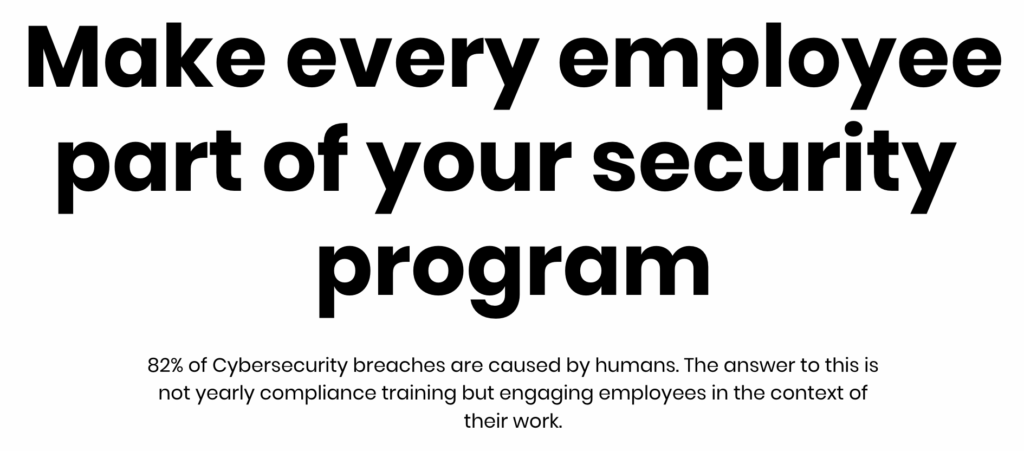Home » Latest Articles » Employee-first Cyber Security Training to Protect Against Cyber Attacks

 I wish I was overly cynical in this introduction (30 years in IT will do that to a person!), but I’m not. I’m being realistic, and I also have hope.
Can you feel that? The winds of change are coming and they are sweeping their way into employee email, Slack channels and everywhere else that employee’s do their daily grind.
This wind of change brings a new kind of cyber security training that is embedded in employees’ daily tools and processes because we should recognize that, if employees are the 82% cause of breaches, then they are 82% of the answer, as well. Modern training isn’t once a year, it happens continuously, in snackable bites. Best of all, it works.
To understand how we got to this modern state of cyber security training, we need to understand where we — and I mean, we — started, why we needed change, and you’ll see how the answer emerges from the fog as we collectively sigh, “Oh, yeah! It’s kinda obvious!”
Here’s the map. Grab a brew. Let’s begin.
I wish I was overly cynical in this introduction (30 years in IT will do that to a person!), but I’m not. I’m being realistic, and I also have hope.
Can you feel that? The winds of change are coming and they are sweeping their way into employee email, Slack channels and everywhere else that employee’s do their daily grind.
This wind of change brings a new kind of cyber security training that is embedded in employees’ daily tools and processes because we should recognize that, if employees are the 82% cause of breaches, then they are 82% of the answer, as well. Modern training isn’t once a year, it happens continuously, in snackable bites. Best of all, it works.
To understand how we got to this modern state of cyber security training, we need to understand where we — and I mean, we — started, why we needed change, and you’ll see how the answer emerges from the fog as we collectively sigh, “Oh, yeah! It’s kinda obvious!”
Here’s the map. Grab a brew. Let’s begin.
Need help with cyber security training? SJULTRA are seasoned cyber security practitioners, we partner with great security companies, and we’re here to help. Let’s swap war stories! Contact us.
We are the error-prone meaty cogs with our hands on the wheels, knobs and dials of systems, networks, and data.Regular cybersecurity training helps employees understand their responsibilities and instills a sense of ownership and accountability. They should be the watchers on the wall, promptly identifying suspicious activities. Employees should strengthen the organization’s cybersecurity posture and reducing the risk of successful attacks.
“82% of employees ticked the box that they’d took the cyber security training!” isn’t a defense, either.Without the knowledge and skills to identify phishing attempts, suspicious links, or social engineering tactics, employees may unwittingly expose sensitive data or fall victim to malicious activities. Let’s unblinkingly face the obvious: our poor cyber security training undermines our organization’s ability to protect its systems, networks, and valuable assets, making it an attractive target for cybercriminals. So what? Who cares? Let’s find out who.

© COPYRIGHT SJULTRA, INC. 2024 ALL RIGHTS RESERVED.